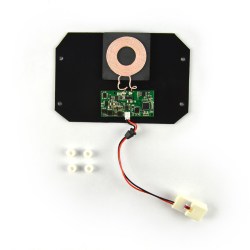Most Common Problems When Working With Conveyor Systems

When you work with multiple machines in manufacturing, complications are bound to happen eventually. You may think your conveyor system is flawless, but it can also develop issues. These are the most common problems when working with conveyor systems.
Jagged Edges
Manufacturers use steel or other metallic materials to construct conveyor belt systems. Metal components, such as the rollers on a conveyor system, can sometimes seize up. If this occurs, it may cause the belt to track unevenly because the conveyor develops jagged edges, endangering the laborers working on the line. The sharpness of the jagged edges could also destroy any materials moving along the conveyor.
Blockages Leading to Backups
A conveyor belt’s primary function is to guarantee the effective flow of materials throughout the facility. When there’s an interruption in the flow, the whole process will come to a screeching halt, causing unwanted downtime. Conveying goods on a flawed system opens the door for a potential obstruction to clog the line.
These obstructions can result from those sharp edges, abrupt directional shifts, or a corroded chute. Unclogging the line takes significant time and effort, making it challenging for laborers to make up for hours lost. And trying to speed the process up could lead to even more stoppages.
Lack of Traction
Conveyor belts can be fickle contraptions. If you put too much or little strain on them, they can malfunction. As the conveyor system sees normal wear and tear, it may not have enough traction to continue to work effectively.
Things like loud screeches, belt stretching, and slippages are telltale signs it’s starting to wear down. There are a lot of dos and don’ts when it comes to conveyor safety. One thing you should do in this situation is contact a professional to alter the tension in the belt.
Falling Off Track
Tracking refers to the alignment of the belt. Proper alignment ensures that the belt is on the right track. A well-tracked conveyor is essential to maintain order, and any deviance could throw a wrench into the whole operation.
When the belt wanders from side to side and falls off the track, it will cause you to halt operations. Plus, it may be costly to repair a conveyor system that’s failing you.
Recognizing the most common problems with conveyor systems will drastically decrease interruptions in the workflow, maximizing your results. Spotting the problem will reduce the issues a faulty conveyor system could cause, making it vital to handle concerns sooner rather than later.




